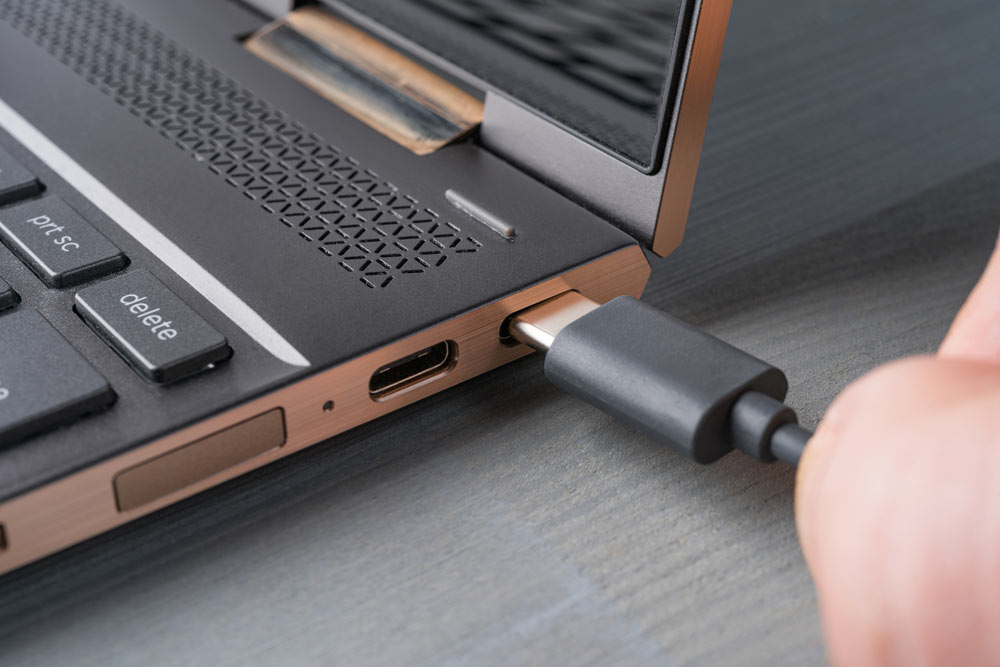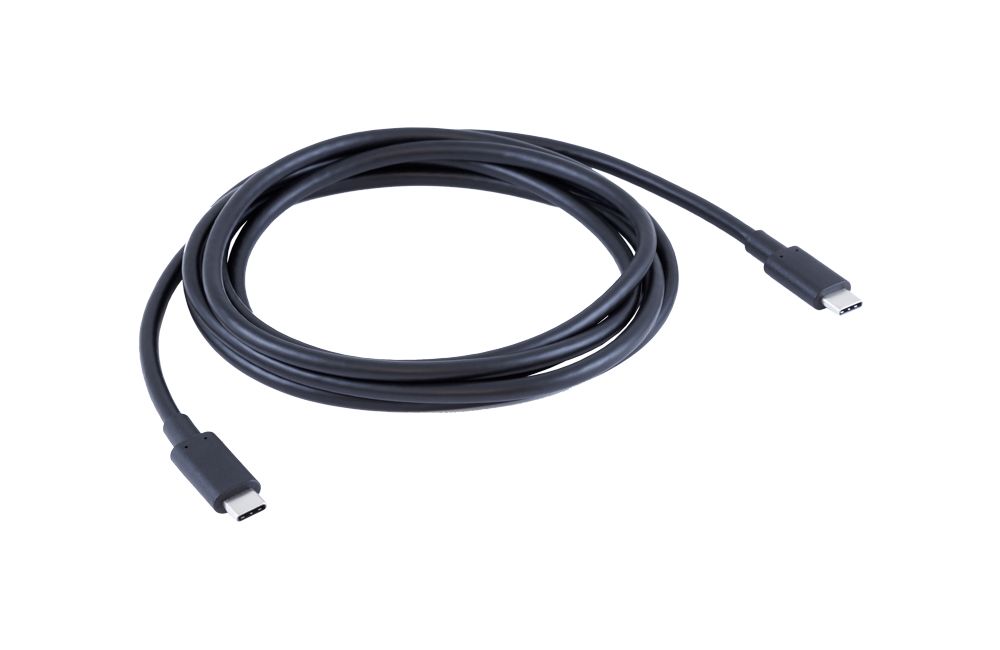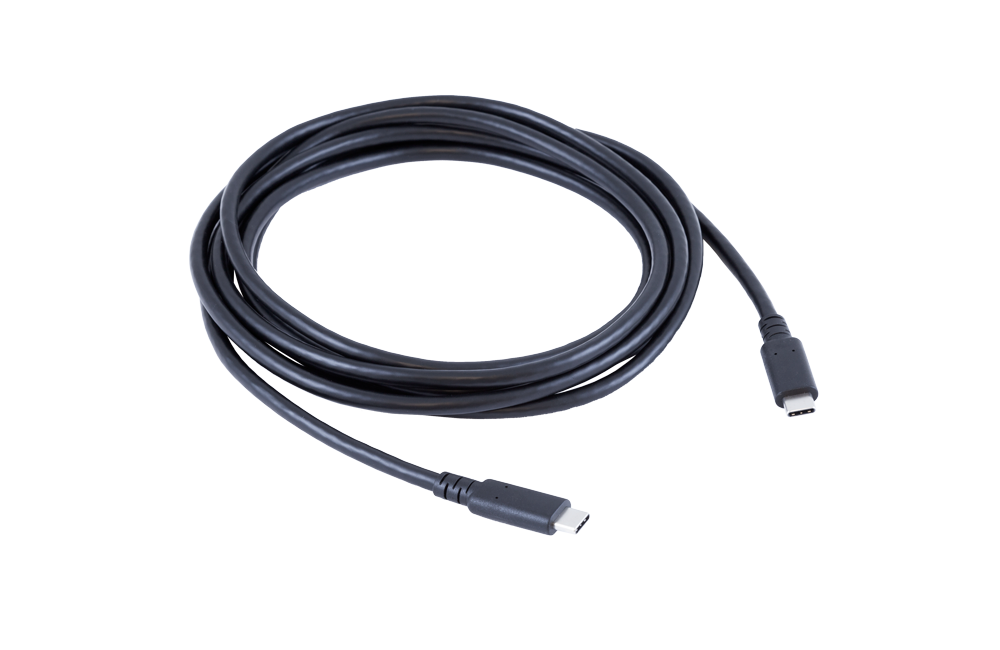A guide to the new USB-C connector, and what to look for when you’re purchasing.
The aim of the USB Type-C, more commonly simplified to just “USB-C,” is to eliminate that issue, with a slim, easy-to-use connector that virtually every device can use.
USB-C ports are becoming ubiquitous for that very reason. You can find them everywhere, from work to school and back home again. Though the specifications for USB-Cs were published back in 2014, they’re now showing up on all our devices, like our external hard drives, laptops, phones, and tablets.
The newer Apple MacBooks and Google Chromebook Pixels are now using USB-C charging and connectivity ports, which is incredibly convenient for office and school spaces in particular. You’ve also likely seen this type of port if you have a newer Samsung Galaxy phone, or the popular Nintendo Switch gaming console.
What is USB-C?
USB stands for Universal Serial Bus. You are likely already familiar with USB ports from the traditional, larger USB Type-A. They are not reversible; in other words, there is a “right” and “wrong” way to plug the USB Type-A connector into its port. It’s also (somewhat awkwardly) large. The sheer size of the USB Type-A led to the creation of various alternatives, such as the micro-USB. No alternative, however, was able to strike the right balance between serious power and compact size for consumers.
Enter the USB-C. It’s around one-third of the size of the USB Type-A. The USB-C has a radically smaller connector size, which makes it incredibly convenient for all of our relatively new, portable devices. The USB-C has been called the “smart connector,” as it can be used to transfer not just power, but also data, including video and audio. One of the most consumer-friendly, refreshingly common-sense features of the new USB-C is that it’s reversible. Unlike micro-USBs, you won’t have to struggle with attempting to plug in the USB-C only to find that it’s upside down. With USB-Cs, there quite literally is no upside down: the connector is identical on both sides.
USB-C cables also carry more power than less modern counterparts. This results in quicker charging even in our larger electronic items, such as laptops. Another amazing feature of the USB-C: it connects while charging, so you can set up your device to connect, for example, to an external monitor for display during a presentation while charging the device simultaneously. In the past, you would have needed two ports and two cables to accomplish both tasks.

USB-C Technical Specifications
The speed of the USB-C is contingent upon what it’s being connected to. As you know, devices can have many different kinds of USB ports. Popularly, there are three general types: the USB 3.1, USB 3.2, and the Thunderbolt 3. You can plug a USB-C cable into a USB 3.1 port, and it will transfer up to 10 gigabytes of data per second. You can also plug the USB-C into a USB 3.2 port, giving you twice greater results at 20 gigabytes per second. More impressively, plugging a USB-C cable into the Thunderbolt 3 (commonly found on Apple products) will result in a data transfer of a remarkable 40 gigabytes per second. These data transfer speeds make the USB-C the fastest of all the USB cables yet.
Through alternative modes, USB-C ports have the capability to support many different protocols. The result of this advancement is that you’ll now be able to have an adapter that outputs HDMI, VGA, DisplayPort, and other connections from just one USB port.
USB-C connectors deliver 2.5 watts of power which is the same delivery as that of the traditional USB Type-A connectors. USB-C gets its leg-up from its “partnership” with Power Delivery (PD) protocol. This allows the USB-C to deliver up to 100 watts, making the USB-C, paired with power delivery protocol, 40 times more powerful than the traditional USB Type-A.
What’s unique and particularly useful about this level of power delivery is that most laptops require about 60 watts of power delivery to charge. Where the USB Type-A was not able to deliver to laptops, the smaller USB-C can serve this space. When you’re purchasing devices and/or USB-C cables, make sure you purchase a cable that supports both USB-C and USB PD, so you can reap all the benefits of this new technology.
Is the USB-C Backwards Compatible?
While the actual USB-C connector is not backwards compatible, the USB standard is backwards compatible. The effect of this is that you will not be able to plug in your old bulky USB cords into the new, smaller USB-C ports.
You will also not be able to plug in your new USB-C cable into any device that has the old, larger USB port. The good news, however, is that USB 3.1 is backwards compatible with the old USB versions. You can accomplish compatibility by means of a physical adaptor that transfers USB-C connectors to traditional USB (i.e. USB Type-A).
The Future of USB-C Technology
The fact that the USB-C is replacing brand-specific laptop charging cables and ports has far and wide implications. The USB-C is not just replacing the traditional, larger USB port; soon, you may even see them as a replacement for audio jacks. One day, it is likely you’ll be able to use USB-C with just about all of your devices. Gone will be the days that you’ll be using a different charger than your friend with an Android phone; at least, that’s what the tremendous potential of the small but mighty USB-C seems to have in store.
Purchasing the Best USB-C Products
In the market for USB-C cables, USB-C switches, USB-C extenders, or USB-C matrixes?
Lightware’s suite of USB-C products are top of the line, and always powerful enough for your devices, whether at school, home, or the office. Need assistance or expertise? Contact us today.





